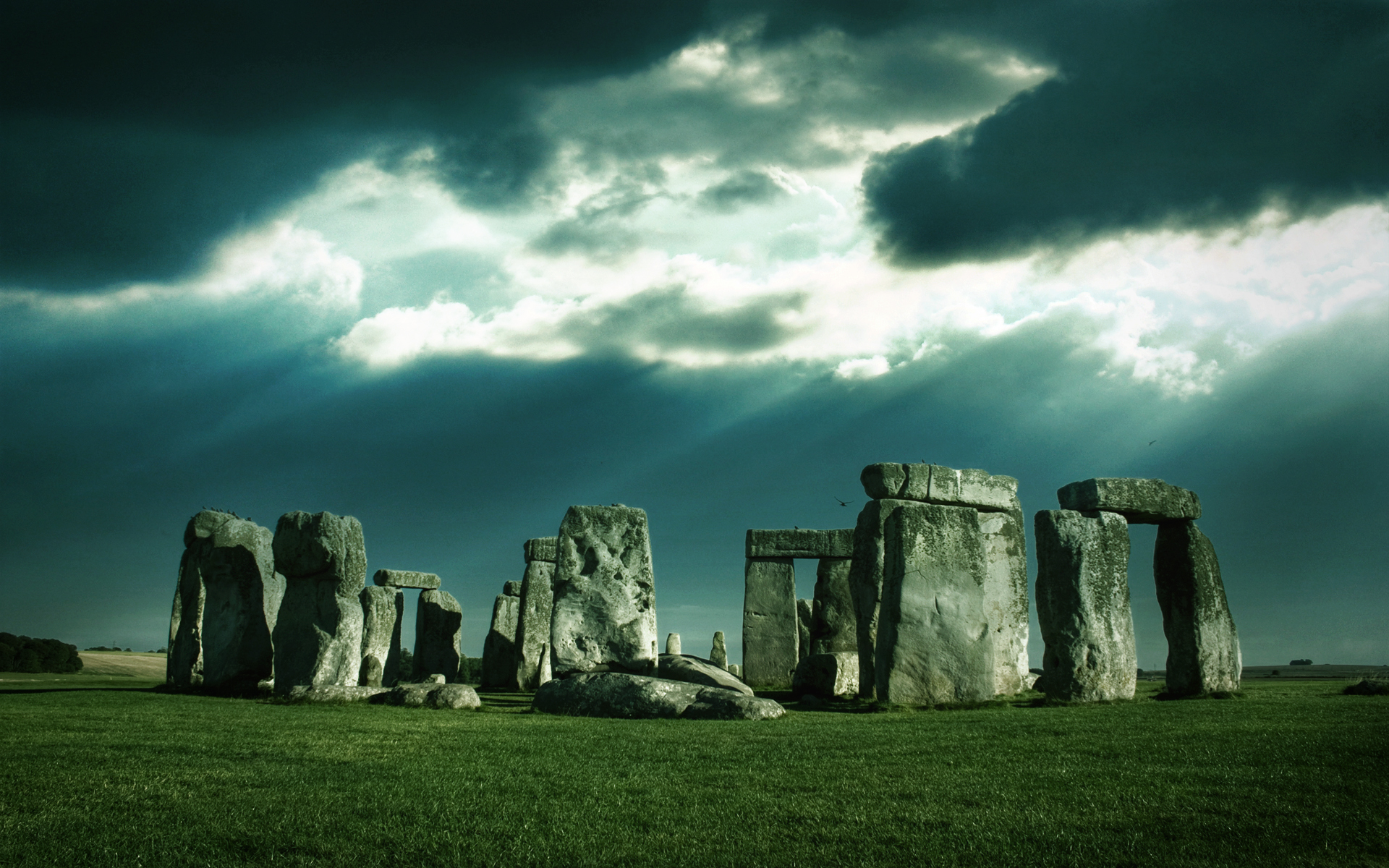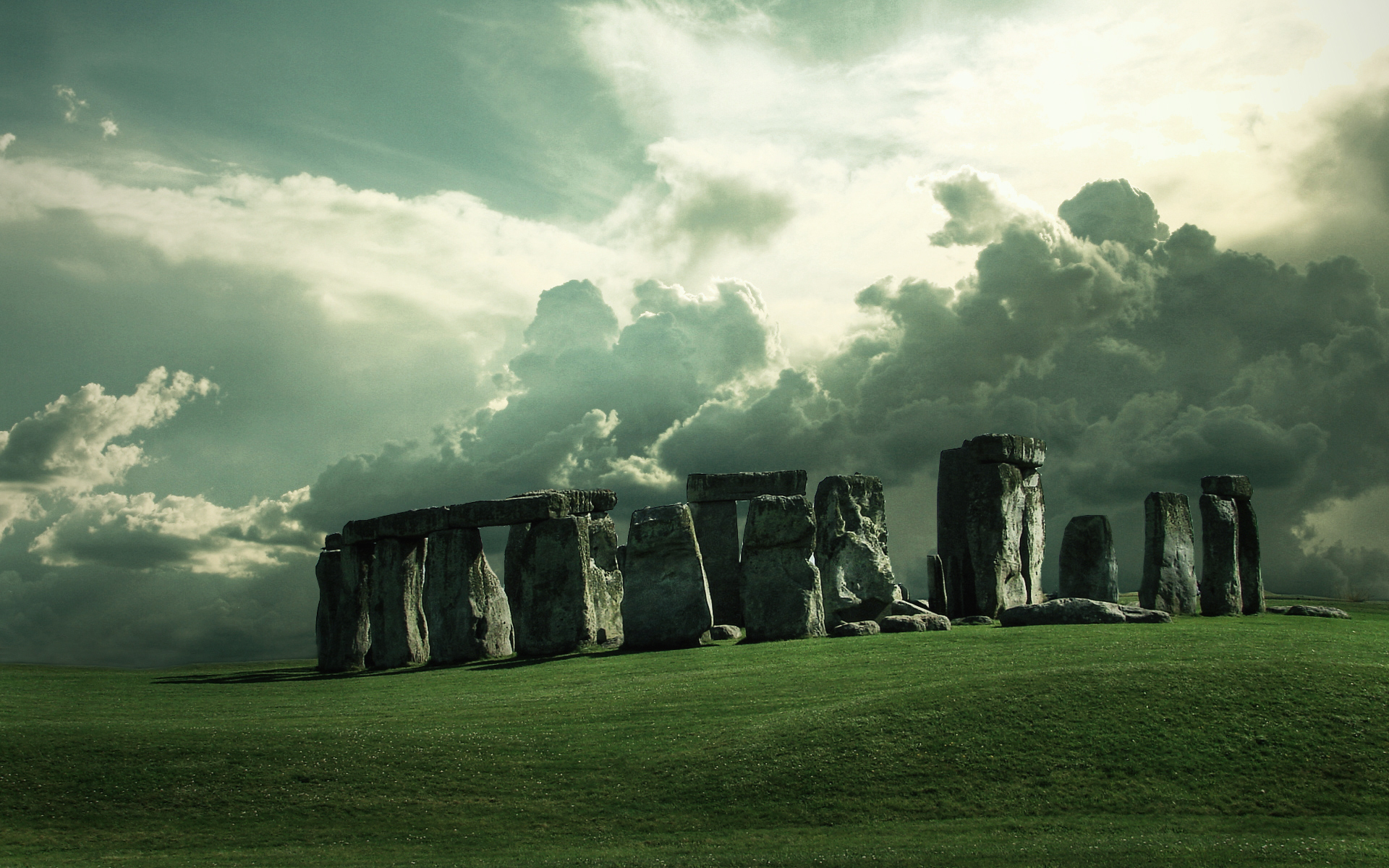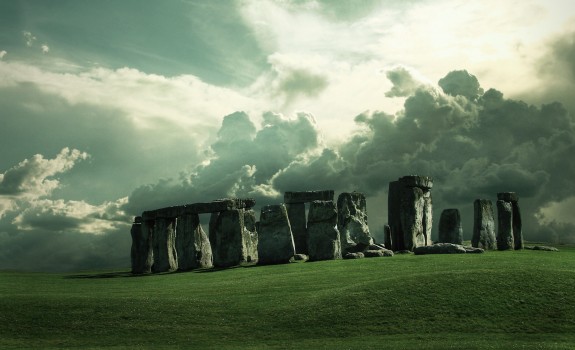

Stonehenge, Wiltshire, England (Image Source: Internet)
Probably the world most famous individual example of megalithic art, the Neolithic stone monument Stonehenge is located in Wiltshire, England, about 2 miles (3 km) west of Amesbury and 8 miles (13 km) north of Salisbury. As one of the most famous prehistoric sites in the world, Stonehenge is the remains of a ring of standing stones set within earthworks. It is in the middle of the most dense complex of Neolithic and Bronze Age monuments in England, including several hundred burial mounds.
While it is known mainly for its Stone Age architecture, it also contains numerous megalithic petroglyphs, and rock engravings. In 1986 the site was added to UNESCO’s list of World Heritage Sites, along with the Avebury Henge monument, also in Wiltshire.
History and Construction: When Was Stonehenge Built?
The origins of Stonehenge as a prehistoric site go back to at least the 9th millennium BCE – the era of Mesolithic art – when the area was still wooded. A number of large Mesolithic postholes have been found, dating to 8000 BCE, all of which originally held pine uprights nearly 3-feet in diameter, similar to several others found in Scandinavia. Later, during the succeeding period of Neolithic art, a causewayed enclosure plus some 460 long barrow tombs were built in the locality, notably West Kennet long barrow (c.3600 BCE). The largest underground burial chamber in England, it was the scene of some 45 burials of important tribal figures over 24 generations. About 3500 BCE, a cursus was constructed half a mile north of the site, as part of a general clearance of the area.
The construction of the Stonehenge monument began some four centuries later, and took place in three main stages.
Who Built Stonehenge?
Archeologists believe that three groups were involved: the Windmill Hill people, the Beaker people, and the Wess-x people.
Megalithic Art
Although Stonehenge is known mainly for its cultural contribution to Neolithic architectural design, the site also features a certain amount of rock art, such as carvings and engravings. This collection of rock carvings, mostly created after 1800 BCE, has been described by one expert as the most significant gallery of ancient art in Britain. For instance, carvings of weaponry including a dagger, some cups and 14 axeheads have been discovered on one of the sarsens (stone 53); more carvings have been found on a number of other stones, all quite similar to late Bronze Age weapons. Recent laser scanning investigations of the surface of three stones, have suggested that other pictographs, geometric symbols and abstract signs – too weak to be seen by the human eye – may be detectable on other stones.
Neolithic Culture
Unlike Stone Age art from the Paleolithic era – which consisted mostly of cave painting and small “venus figurines”, Neolithic art is primarily associated with ceramic art, textiles and monumental megalithic architecture. The oldest art involving stone structures is to be found at Gobekli Tepe (9000 BCE) and Catal Huyuk (c.6100 BCE) – both in Turkey. It consists of shallow relief sculpture and numerous engravings. Brittany and Ireland were also home to important centres of megalithic culture, such as the Barnenez mound (c.4800 BCE), the Carnac stones (c.4000 BCE) and Gavrinis (c.3500 BCE), Newgrange (c.3100 BCE), and Knowth (c.2500 BCE). Outside Europe, the most famous form of megalithic culture are the famous Egyptian pyramids, dating from about 2600 BCE onwards.
Source: Encyclopedia of Stone Age Art © visual-arts-cork.com

